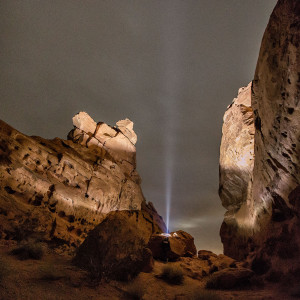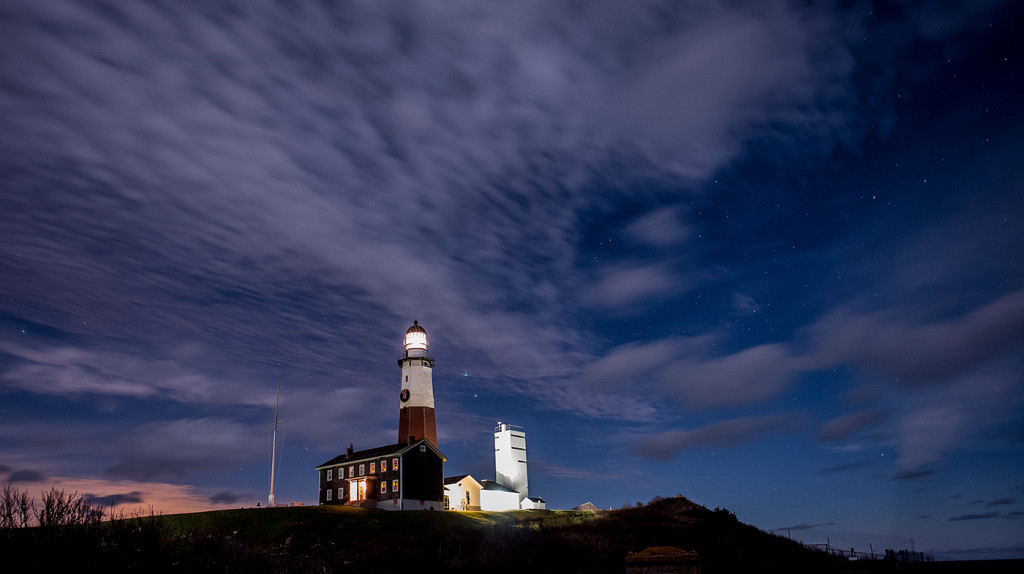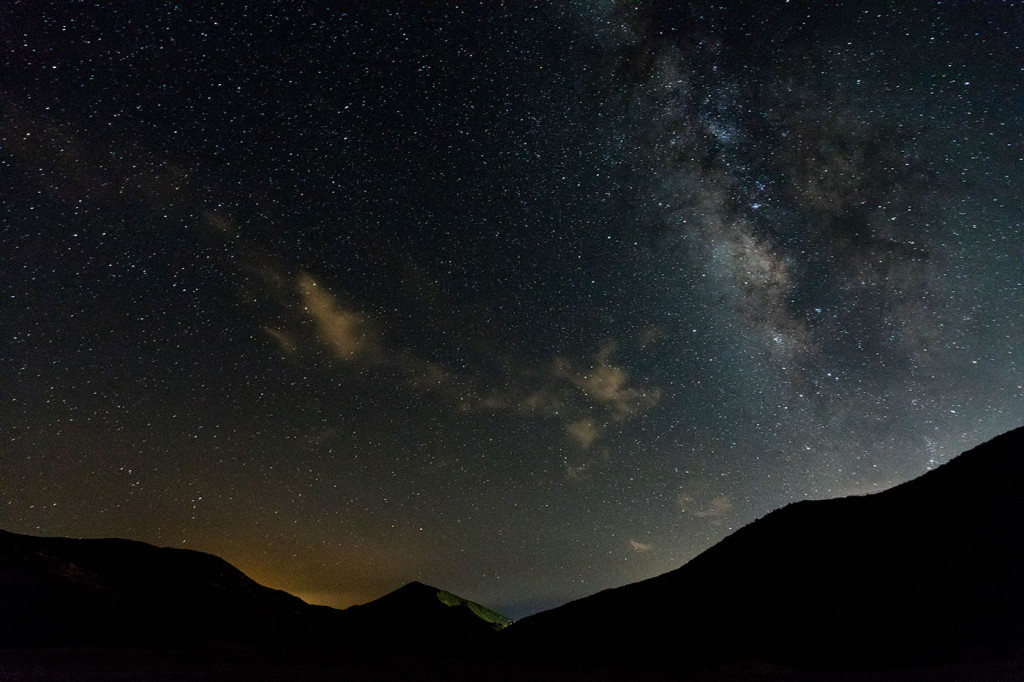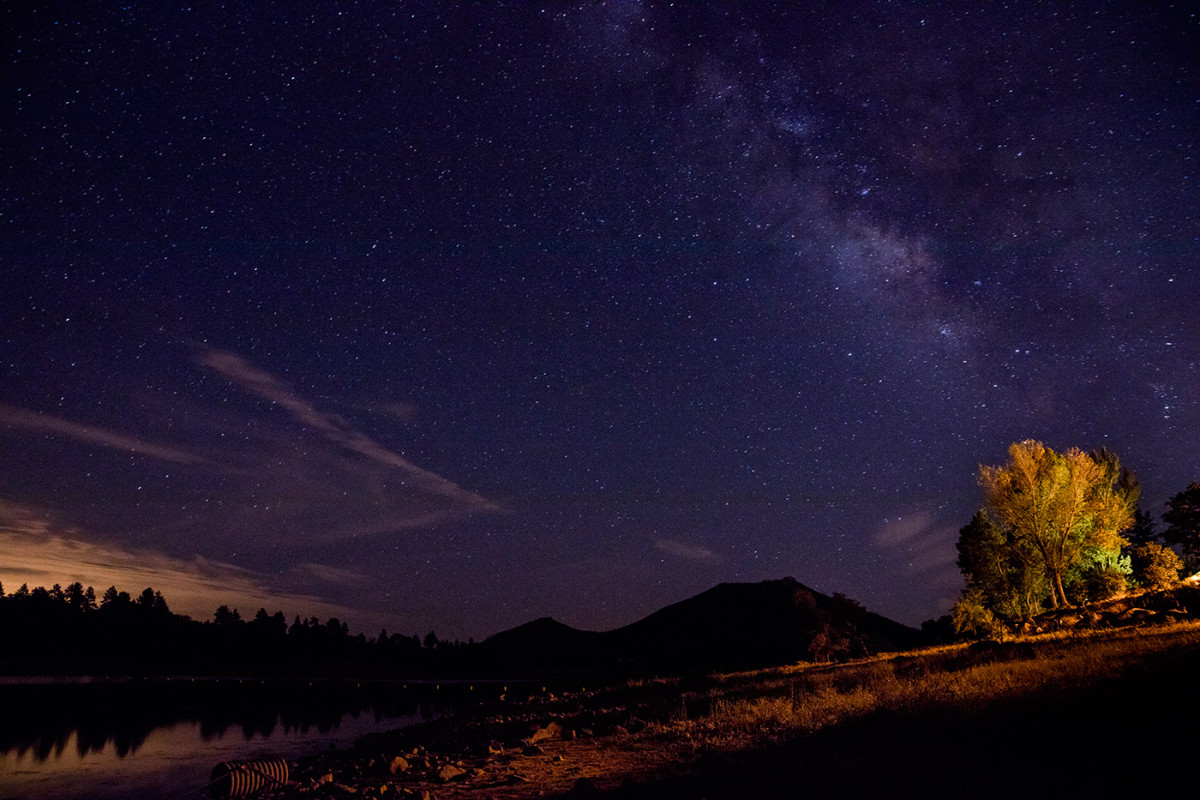I rarely get the chance to shoot a sky without light pollution, a hazard of living in lower New York. When I’m out and about though, I try to get away from the city lights and capture the stars above.
While there are many ways to capture the night sky (star trails come to mind) this post will focus on ways to photograph the stars sitting in the sky.
Click to read more.
Tip #1: Get far, far away from city lights and clouds
Two things will destroy night sky shoot fast – city lights and clouds.

It’s obvious why clouds will be bad for a shoot – you won’t be able to see the sky. Such was the case, unfortunately on the one night I had to get out to the Valley of Fire in Nevada recently.
The reason city lights are so hazardous, though, is that light from all of the buildings and street lights and other such man-made objects will cause your sky to go very bright even in the dead of night. You won’t be able to see the stars. It’s why for the featured photo in this post, I drove out to Lake Cuyamaca in California, well away from the lights of San Diego, where I was staying. I was much better able to see the skies this way. I went at about 11 p.m., so there was no chance of residual sunset or morning sunrise creeping into the photo.
Sometimes though, partly cloudy skies actually work out – letting a few stars peek in here and there:

Tip #2: Use a long (ish) exposure and a tripod
Choosing an exposure setting to use can be a bit difficult. Your camera’s meter won’t be of much use in pitch-black darkness. Generally speaking, I use an ISO setting that will allow me to aim for an exposure of no more than 30 seconds – more than that, and the rotation of the earth will start to cause the stars to streak across the sky ever so slightly. Wide angle lenses can also help mitigate the movement-of-the-earth factor – 11mm, 14mm, 16mm, 24mm are all good places to start. The longest of the exposures in this post are 30 seconds. The shortest (the lighthouse) is 8. I generally keep the aperture close to wide-open (the lowest f/number) to get the lowest possible ISO and therefore a cleaner image.
It goes without saying that at these long exposures, a tripod is a must. You can beat the rotation of the Earth by changing up your exposure time, but that won’t do anything for shaky hands back on the surface of the planet.
Tip #3: Use foreground objects to add interest to your photo
A plain photo of the sky won’t be very interesting – well, actually, the Milky Way is interesting pretty much all of the time, so scratch that. But you’ll still get a more interesting photo if you frame the sky with an interesting foreground, something to anchor the viewer to on Earth and give a frame of reference for size.
If you have something lit up in the foreground, like the tree lit by car headlights in the featured photo at the top of this post, that can work, but if not, you can try something like this:

I used the mountains around the Mount Laguna area to create an interesting silhouette in the foreground (see what I did there?). Silhouettes can also make for interesting foreground objects against the night sky, in the absence of any way to light up objects in the foreground.
Bonus tip: Try the Skyguide app
When I first started shooting these night skies, I mostly pointed my camera in one direction or another and exposed at a very high ISO for a short exposure, just to generally figure out where the Milky Way was before doing an exposure at the proper settings. A colleague of mine pointed me in the direction of an app called “Skyguide” – it costs a few bucks ($2.99), but takes much of the guesswork out of where to point your camera. It uses your phone’s GPS and compass functions to show you where particular constellations are in any given place at any given time.


1 thought on “Three tips, better shot: The night sky”